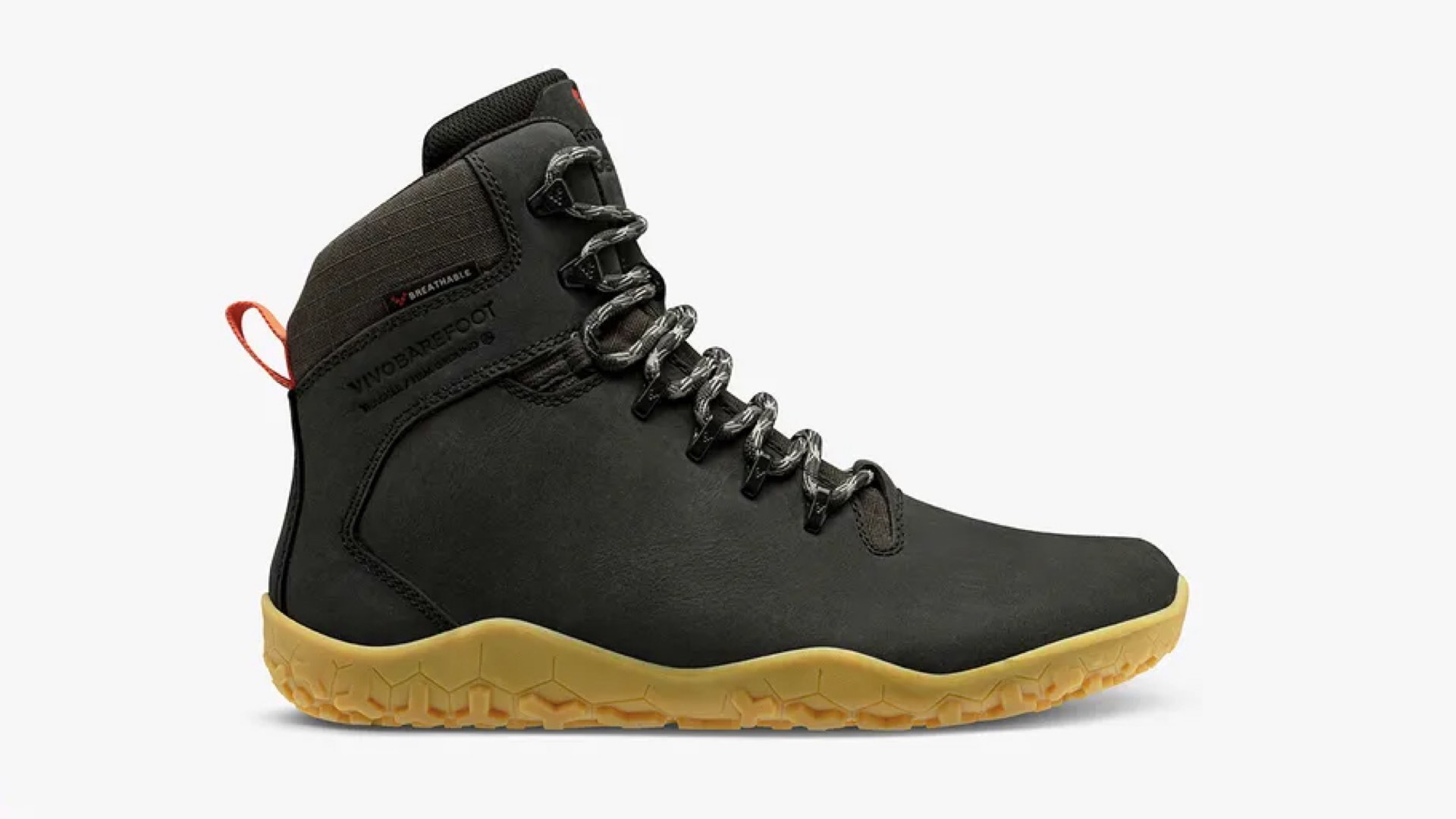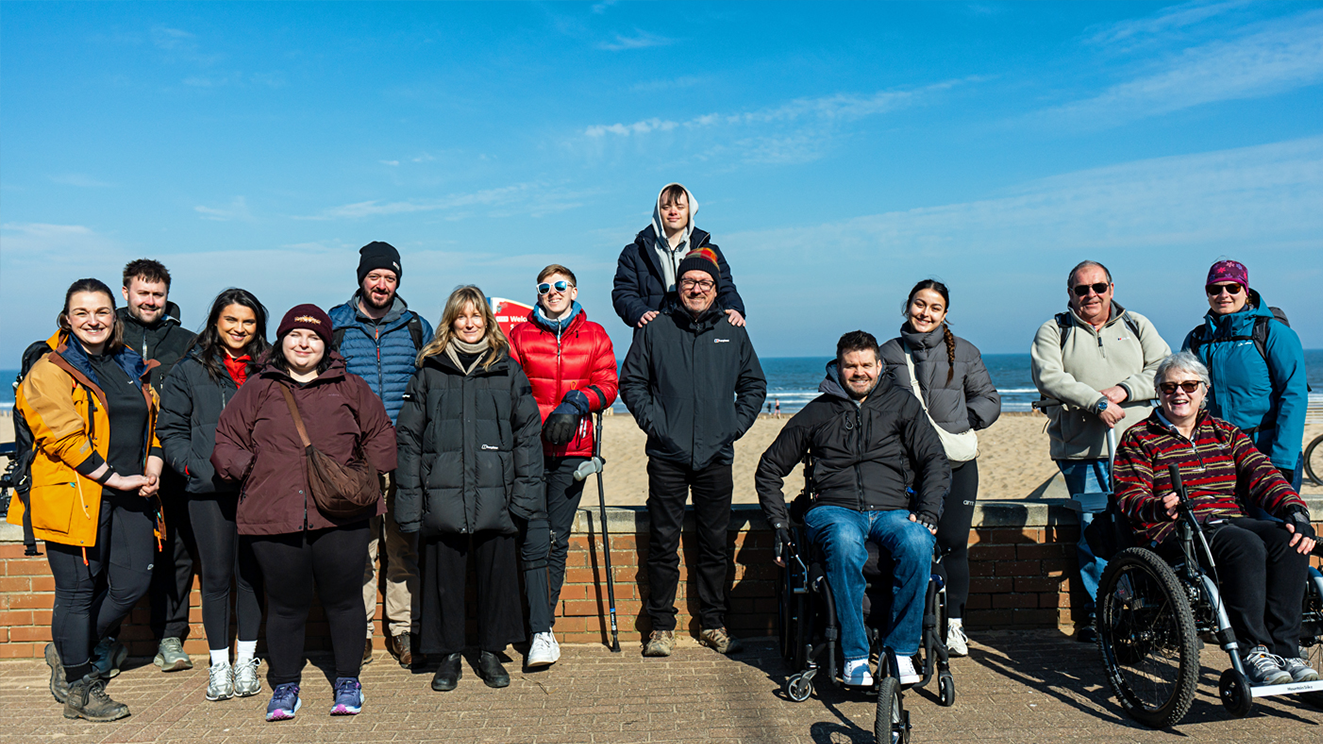Advnture Verdict
On softer surfaces these barefoot boots are delightful, but less-experienced users will struggle on tougher, technical terrain, especially jagged rocks, until they get used to them – after which they provide a more intimate trail experience.
Pros
- +
Extremely light
- +
Unrivalled trail feel
- +
Slipper-like comfort (once you become used to the lack of cushioning)
- +
Excellent eco credentials
- +
Easy to pack when travelling
Cons
- -
Flexible to the point of floppiness
- -
Low level protection for sole
- -
Price tag isn’t as lightweight as the materials
You can trust Advnture
Vivobarefoot Tracker II FG: first impressions
The Vivobarefoot Tracker II FG is greener than its predecessor. For the second generation of this shoe (we review the original version in our best hiking boots buying guide) Vivo have impressively improved the environmental footprint of the Tracker by using more sustainable materials, including a recycled waterproof plastic lining and recycled membrane. The leather used in the upper is, according to the brand, ‘naturally scarred leather from free-roaming cattle sourced from small-scale farmers’. Made from reusable / renewable natural materials, when you are finished with your boots you can send them to revivo.com so materials can be repurposed.
These boots bring a barefoot approach to the trails, meaning that there is no drop between heel and the toe, the toe box is extra wide (allowing toes to spread and further heightening the tactile experience) and the stack height (distance between foot and the ground) is tiny, so you can really feel the trail you’re traversing.
Is all this a good thing? That depends on your experience and point of view: barefoot walkers / runners love the tactile dexterity, arguing that by increasing the sensory perception of the trail surface you enjoy a closer relationship with the terrain, pay more attention to foot placement and therefore walk / run more intelligently.
• RRP: $240 (US) / £190 (UK)
• Weight (per boot): 329g / 11.6oz
• Drop: 0mm
• Materials: Leather upper; recycled waterproof plastic lining and recycled membrane; removable thermal insole; sticky rubber ‘Firm Ground’ sole with a 2.5mm base and 4mm lugs
• Colors: Bracken / Botanical Green / Obsidian
• Compatibility: All non high-alpine trails across 2½- to 3 seasons, if you’re a barefoot walker
Vivobarefoot Tracker II FG: on the trails
Barefoot-style boots are not for everyone, but if you like trail feel – ie, if you want to experience the terrain you are hiking across in a tactile way, rather than be removed/insulated from it by an inch of chunky outsole and cushiony midsole – then these boots could soon become hiking essentials for you.
By cutting out excess cushioning the weight is slashed, allowing you to scamper along the track fast, if that’s your thing. And, despite the minimalist design, the sole does feature 4mm lugs for traction and grip on firm ground. On test we found the FG outsole to be effective on rocks, even in slippery and wet conditions, but pretty hopeless on sloppy, slidey mud – but that’s all to be expected given that FG stands for ‘Firm Ground’.
The Trackers feel comfortable straight out the box, but you really do need to break your legs in (it makes a change from working out how to break in hiking boots) – initially the back of your calves will burn and the lack of cushioning in the midsole will make your feet and legs ache, but gradually this will dissipate as muscles strengthen.
I started off wearing the Trackers on a sandy coastal trail, which is ideal terrain to get a feel for them, before taking them on more rocky and rubbly paths. After the first day my legs felt far more tired than I would expect them to in more standard hiking boots with a more substantial midsole and more substantial outsole. After several days, however, my feet and legs became more used to the boots, and I ached less.
Because of the lack of cushioning, I definitely paid much more attention to the trail I was walking, choosing my foot placement carefully. This sounds a bit onerous, but I actually enjoyed it, and I stumbled less than I might have because I was paying attention to the rocks and roots in front of me, instead of daydreaming. It does mean you are more mentally tired at the end of a day’s walking.
There is a good amount of support around the ankle, so these boots can be worn with a backpack, but the extra weight will increase the strains and pains you feel until you are used to wearing these minimalist boots.
I found these boots pretty breathable and reliably waterproof, as well as being light and generally comfortable (after I’d become used to the lack of cushioning, of course). There is also now a removable thermal insole so you can explore across all seasons.
They are also extremely flexible and foldable, which can be good on some trails (so long as you’re not spending hours edging along rocks), and means they can be packed in bags and backpacks for hiking adventures when you’re travelling.

Author of Caving, Canyoning, Coasteering…, a recently released book about all kinds of outdoor adventures around Britain, Pat has spent 20 years pursuing stories involving boots, bikes, boats, beers and bruises. En route he’s canoed Canada’s Yukon River, climbed Mont Blanc and Kilimanjaro, skied and mountain biked through the Norwegian Alps, run an ultra across the roof of Mauritius, and set short-lived records for trail-running Australia’s highest peaks and New Zealand’s Great Walks. He’s authored walking guides to Devon and Dorset, and once wrote a whole book about Toilets for Lonely Planet. Follow Pat’s escapades on Strava here and Instagram here.

